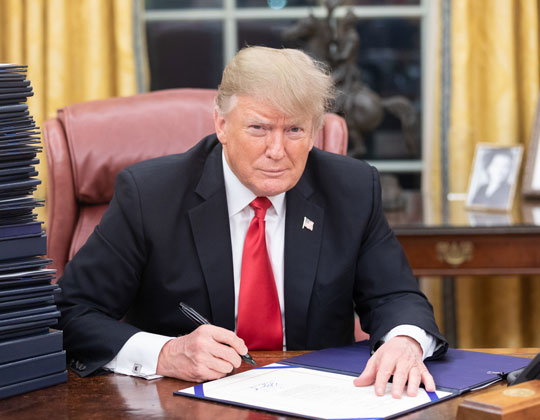June 4, 2025
In a major shift with far-reaching implications for global trade, President Donald Trump has signed an executive order doubling tariffs on imported steel and aluminum, raising duties from 25% to 50% effective immediately. The move, justified under national security grounds, is part of the administration’s broader push to protect American industries from what it views as unfair foreign competition.
While the United Kingdom was temporarily exempted amid ongoing bilateral trade talks, the new tariffs have already triggered unease in international markets and provoked warnings of retaliatory measures from the European Union and other global trading partners.
The Trump administration’s decision to escalate trade protectionism mirrors its earlier trade strategies during Trump’s previous presidency. Framing the action as a necessary step to safeguard American jobs and manufacturing capacity, the White House emphasized that U.S. steel and aluminum producers had suffered long-term harm due to global overcapacity and dumping practices by foreign nations, especially China (Barron’s, 2025).
This decision comes despite previous efforts by global institutions and U.S. allies to ease trade tensions. The doubling of tariffs, however, marks a definitive pivot away from multilateralism, reigniting fears of a full-blown trade war in an already fragile economic environment.
Global financial markets responded immediately and with caution. The S&P 500 experienced increased volatility, while Asian markets dipped slightly amid investor anxiety about potential disruptions to supply chains and the rising costs of industrial inputs. The SPDR S&P 500 ETF Trust (SPY) fluctuated within a narrow range, reflecting investor hesitation rather than panic—at least for now.
In Japan, Bank of Japan Governor Kazuo Ueda downplayed concerns, suggesting the Japanese economy is resilient enough to absorb the shock. He cited a strong cycle of rising wages and inflation that may act as a buffer against external headwinds (Asahi Shimbun, 2025). Still, analysts in Tokyo and Seoul noted that a prolonged period of trade conflict could derail planned expansions and weaken regional manufacturing output.
In Europe, reactions were more direct. The European Commission issued a sharp statement warning that the U.S. tariffs violate the spirit of international trade agreements and risk escalating into tit-for-tat measures that would undermine global growth. EU officials indicated that retaliatory tariffs were being “actively considered” if Washington does not reverse its position (EUNews, 2025).
Beyond the immediate market tremors, economic institutions are beginning to reevaluate global growth prospects in light of the new U.S. trade policy direction. The Organisation for Economic Co-operation and Development (OECD) has already lowered its global growth forecast for 2025 and 2026 to 2.9%, down from previous estimates of 3.3% and 3.1%, respectively (Reuters, 2025). The organization cited growing policy uncertainty, supply chain disruptions, and slowing investment as key factors in its downward revision.
For the United States itself, the OECD reduced growth expectations to just 1.6% in 2025, warning that while tariffs may offer temporary relief for domestic producers, they tend to drive up consumer prices and reduce investment, especially when retaliatory measures follow. The organization also cautioned that increased protectionism might deter business confidence and reduce overall productivity.
As the global economy attempts to rebound from a series of shocks—from the COVID-19 pandemic to the energy crisis and geopolitical instability, the U.S. decision to double tariffs on steel and aluminum represents a major inflection point. While the immediate effects are still unfolding, the long-term consequences may include reduced global trade volumes, increased inflationary pressure, and heightened diplomatic friction. Whether the strategy yields political or economic gains for Washington remains uncertain, but the risks to global economic stability are already beginning to materialize.
Sources
Asahi Shimbun. (2025, June 3). BOJ chief voices confidence economy can withstand U.S. tariff hit. Retrieved from https://www.asahi.com/ajw/articles/15818547?utm_source=chatgpt.com
Barron’s. (2025, June 3). Trump signs order doubling steel, aluminum tariffs, citing national security. Retrieved from https://www.barrons.com/articles/trump-tariffs-oecd-forecast-growth-e78b7c3c?utm_source=chatgpt.com
EUNews. (2025, June 3). Tariff USA: Trump, EU, OECD comment. Retrieved from https://www.eunews.it/en/2025/06/03/tariff-usa-trump-ue-oecd/?utm_source=chatgpt.com
Reuters. (2025, June 3). OECD lowers global outlook as Trump trade war hits US growth. Retrieved from https://www.reuters.com/world/china/oecd-trims-global-outlook-trump-trade-war-hits-us-growth-2025-06-03/?utm_source=chatgpt.com








